
In the third lunar month, when the rice has taken root and turned the fields green, the Muong Tlo people in Lo Son Commune, Tan Lac district, Hoa Binh province joyfully step into the traditional stream fishing festival - an extraordinary cultural and spiritual ritual closely tied to the ancient wet-rice civilization.
The festival is also known as the
"field-weeding ceremony." It serves as a time to connect people with
nature, bridge the past and present, and foster gratitude and environmental
awareness among the Muong community in this region.

Spiritual master Bui Van Don, along with the
procession, performs the festival's opening ceremony.
 Rafting ceremony.
Rafting ceremony.
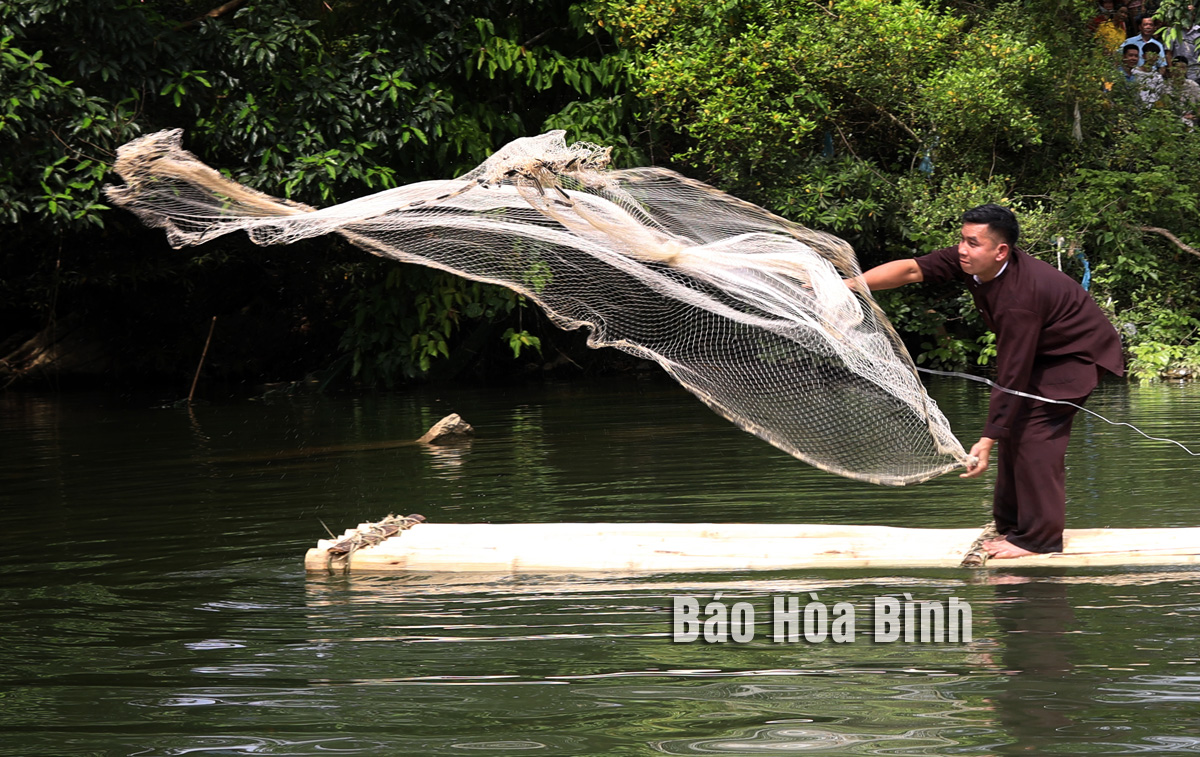
A representative of the commune leadership
casts the first fishing net to inaugurate the communal stream fishing activity.
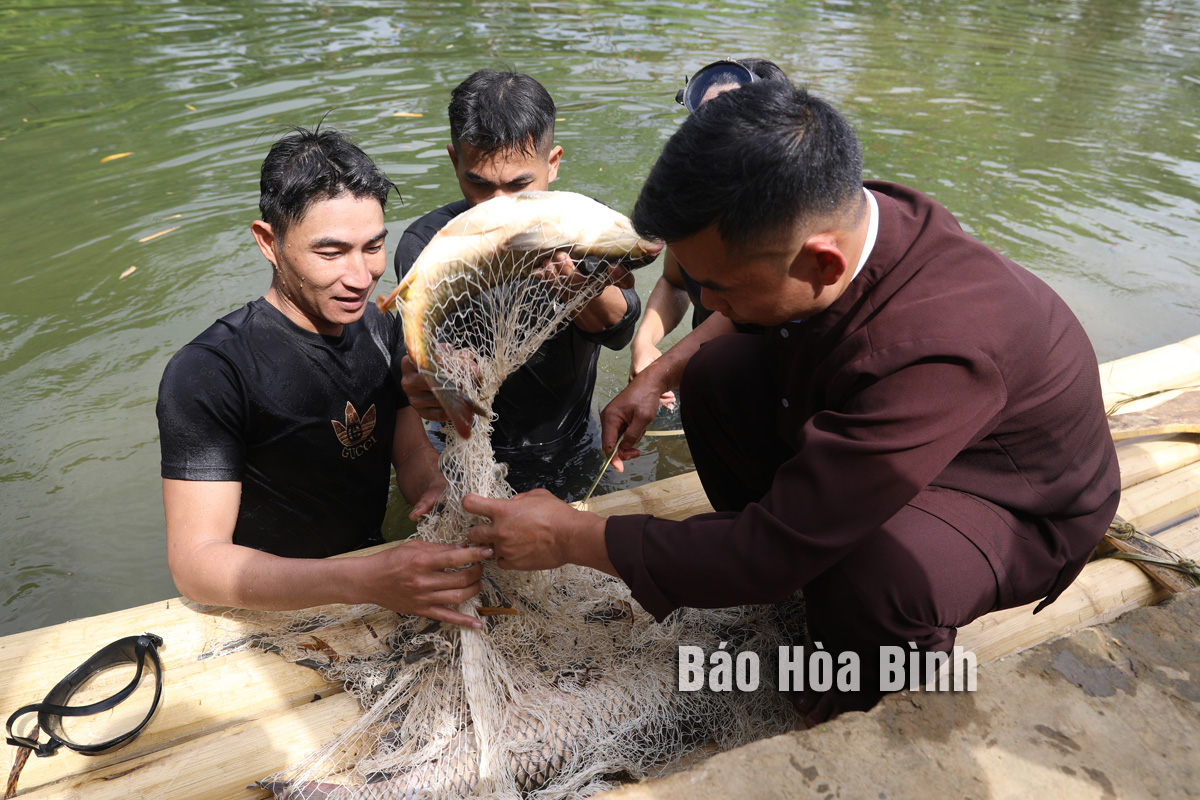
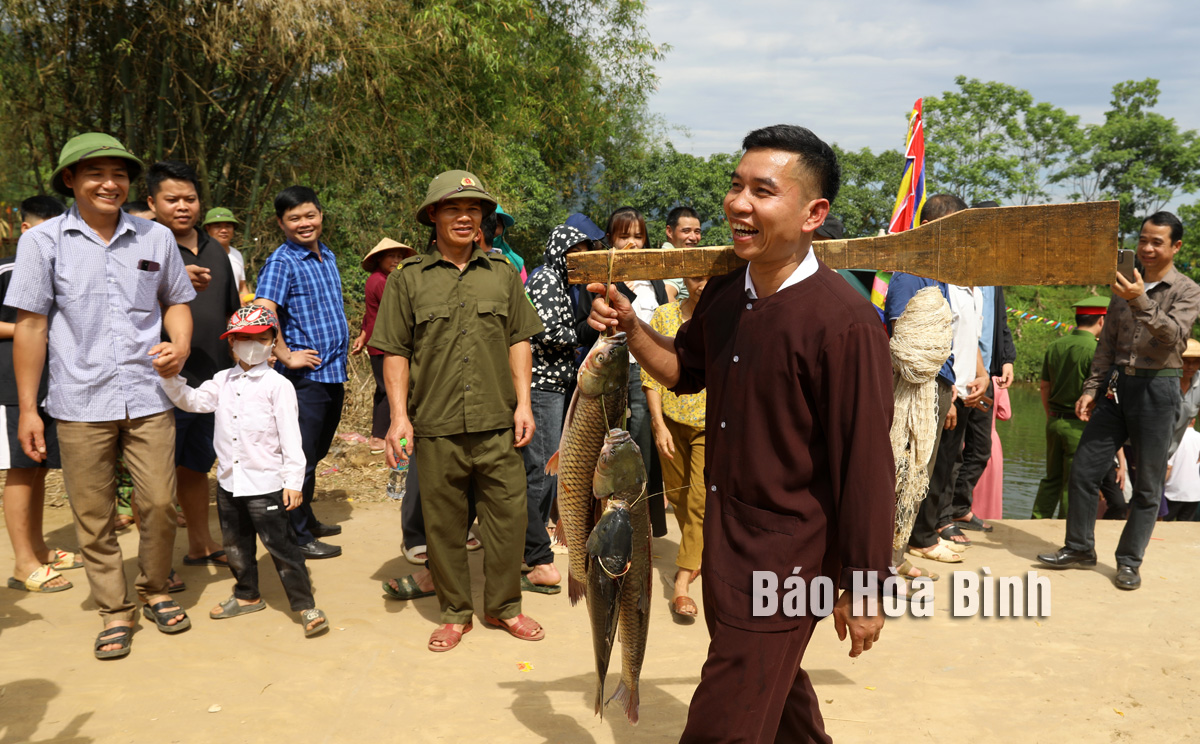
The joy of catching big fish in the net of the stream.
The biggest fishs are offered in a gratitude ceremony at the shrine dedicated
to the village's guardian deity.
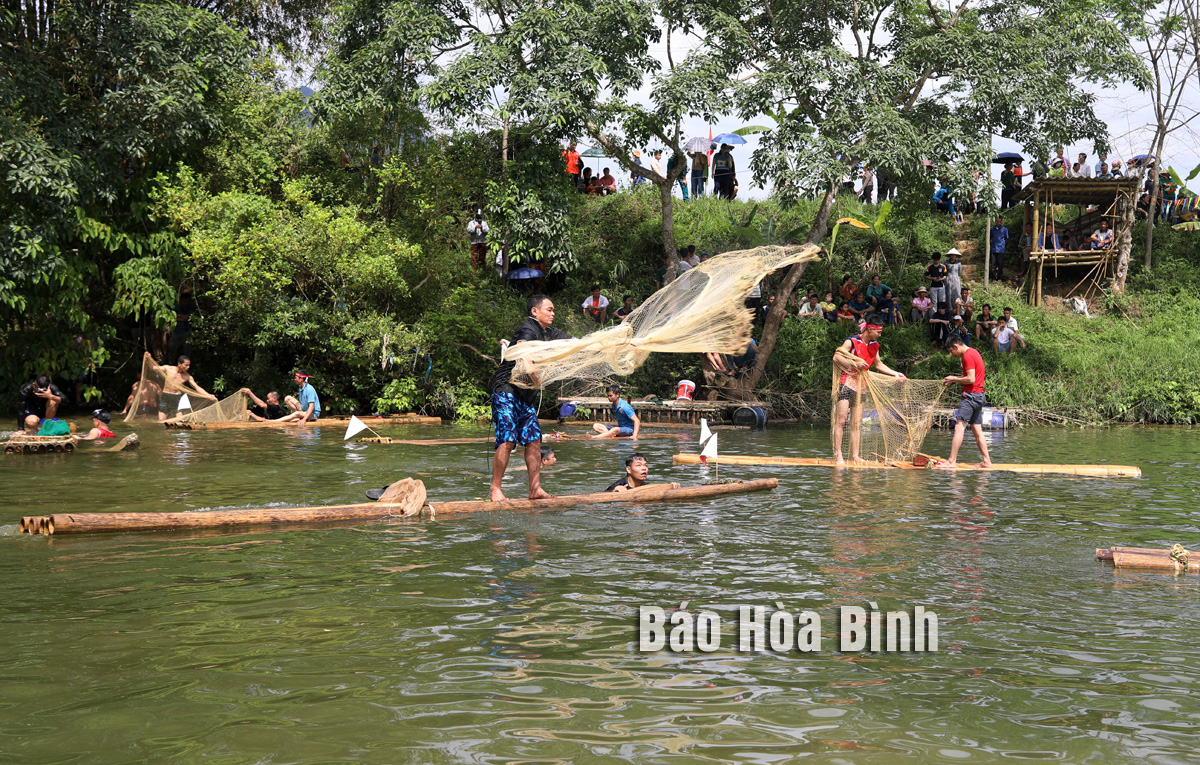
The men of the Muong
community begin catching fish.
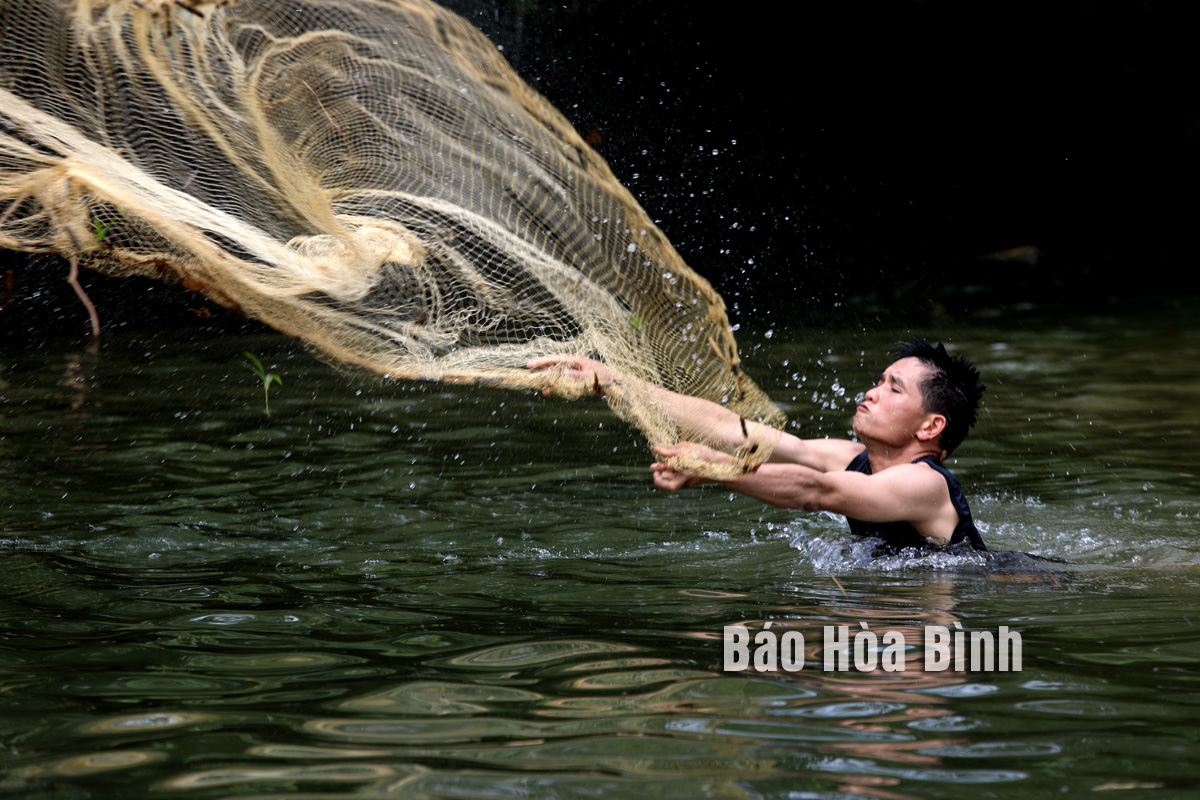 The moment when strong men cast their nets
to catch fish.
The moment when strong men cast their nets
to catch fish.
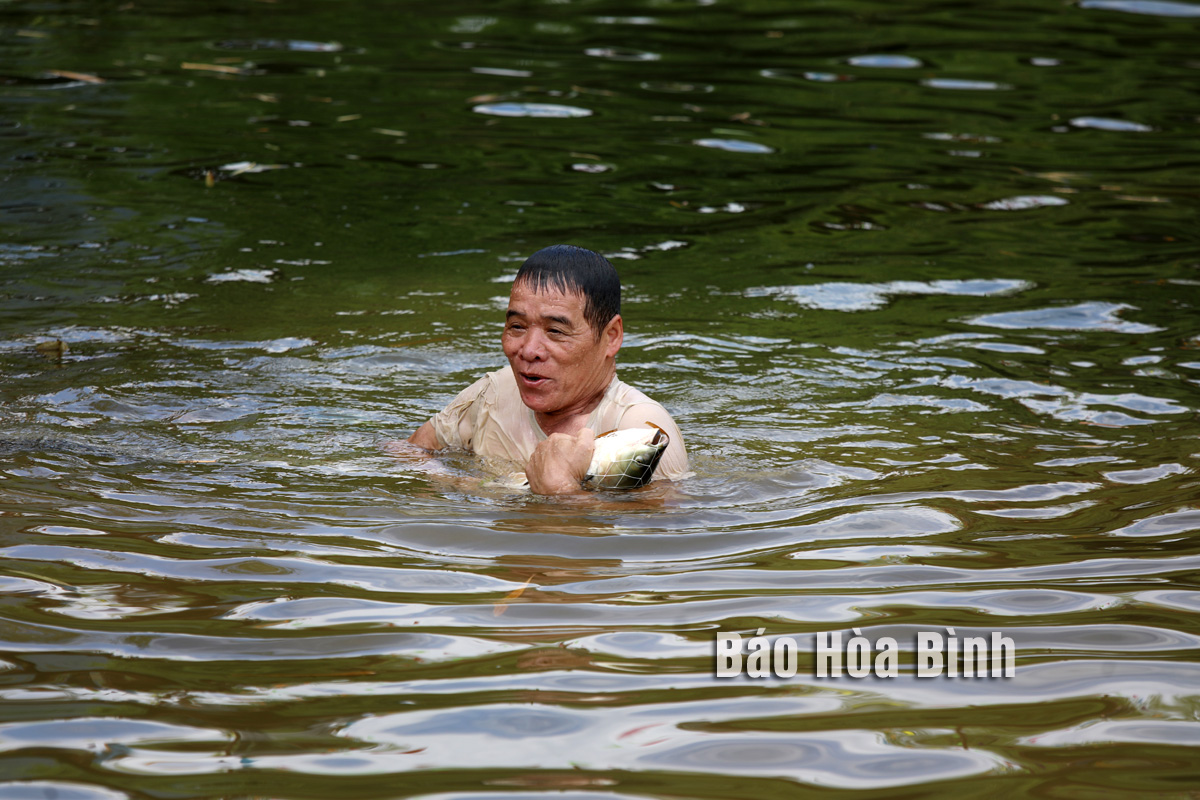
The delightful moment of catching big fish.
 Most of the fish caught are dedicated to
the offering rituals, while the remainder is either released back into the
stream or shared among the villagers, reflecting the cultural concept of
"water blessings - human blessings," harmonizing with nature and
showing gratitude for what the heavens and earth provide.
Most of the fish caught are dedicated to
the offering rituals, while the remainder is either released back into the
stream or shared among the villagers, reflecting the cultural concept of
"water blessings - human blessings," harmonizing with nature and
showing gratitude for what the heavens and earth provide.
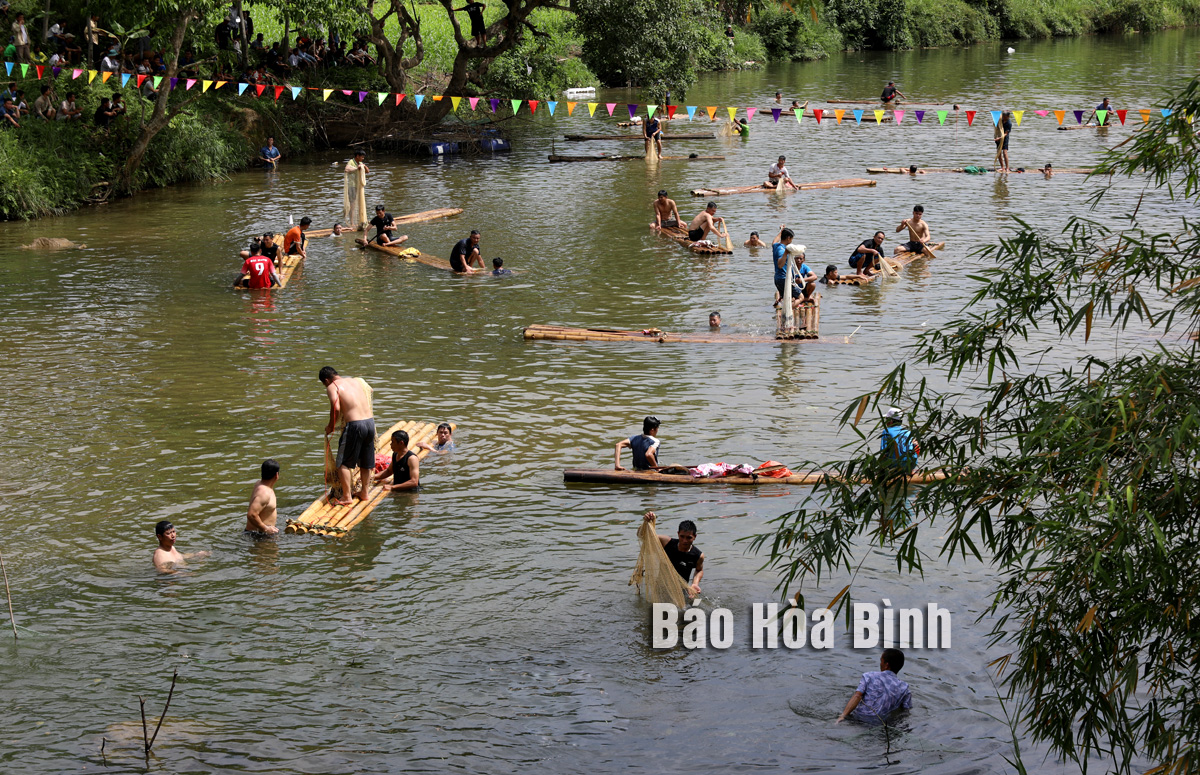 Throughout the festival, the locals remain
conscious of preserving aquatic resources. Only designated sections of the
stream are chosen for fishing, and no destructive fishing methods are used.
Throughout the festival, the locals remain
conscious of preserving aquatic resources. Only designated sections of the
stream are chosen for fishing, and no destructive fishing methods are used.
 Many villagers and visitors eagerly cheer
and admire the spectacular net-casting moments and the bountiful catches.
Many villagers and visitors eagerly cheer
and admire the spectacular net-casting moments and the bountiful catches.
Nestled halfway up the mountains in Cao Son commune, Da Bac district, Sung village appears like a picture preserved intact through generations. With a history of over 300 years, the village is home to nearly 100 households of Dao Tien ethnic group – the people who still maintain their distinctive characteristics in housing architecture, clothing, customs and traditional crafts. The village is drawing increasing interest and exploration from both domestic and international tourists, as every visit becomes a cultural journey to experience the authenticity, friendliness, and hospitality of this highland region.
This Spring, more than 1,000 phoenix trees in Thang Hamlet, Thach Yen Commune (Cao Phong) have bloomed brilliantly, quickly spreading on social media. The picturesque beauty of the flower garden has attracted the participation of many people to admire and take photos.
This belief is both a guiding principle and a lifelong ambition for Sa Van Cam, a member of the Tay ethnic group in Da Bac district and a passionate advocate for the Tay culture. The native has devoted years to the revival, preservation, and teaching of the ancient Tay script.
Located just 25 km from Hoa Binh city and approximately 100km from Hanoi, with a journey of around 1 hour 45 minutes, Ngoi Hoa ecotourism site (PriorBay Resort) in Suoi Hoa commune, Tan Lac district, is a stunning peninsula retreat, and a standout destination within the Hoa Binh Reservoir tourism area. Officially opening in February this year, the resort captivates visitors with its distinctive vacation products and a range of exciting adventure experiences.
Over 1,500 women paraded in traditional ao dai (long dress) at Hoa Binh Square on March 5 to mark Ao Dai Week 2025 launched by the Vietnam Women's Union. Organised by the provincial Women’s Union in collaboration with the city’s chapter, the annual event features lively folk dance performances and a colorful parade that celebrated the beauty of Vietnam’s traditional dress and its rich cultural heritage.
With skillful and meticulous craftsmanship, H’Mong women in Pa Co Commune, Mai Chau district carefully carry out dozens of manual steps to weave skirts, bags, scarves… with vibrant colors. They continue to preserve the traditional brocade weaving, transforming these products into tourism goods while also promoting the H’Mong people's unique cultural beauty.




 Rafting ceremony.
Rafting ceremony.


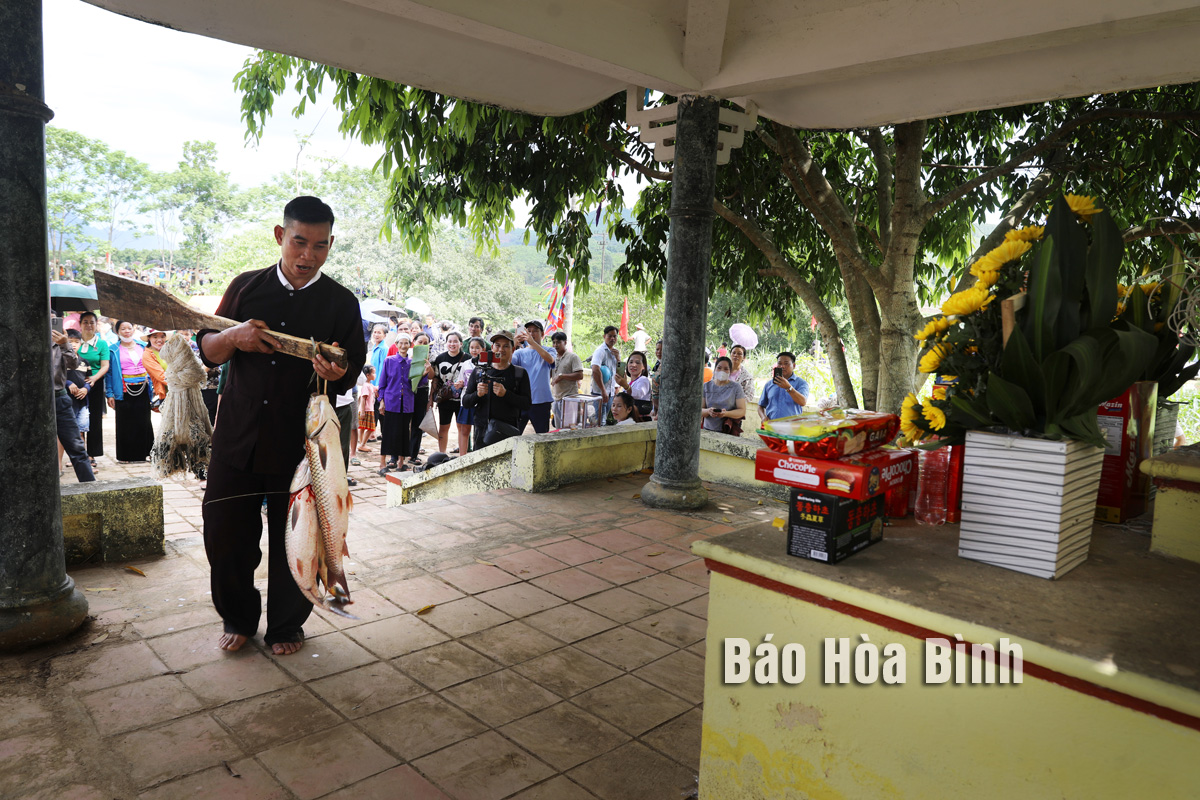
 The men of the Muong
community begin catching fish.
The men of the Muong
community begin catching fish. The moment when strong men cast their nets
to catch fish.
The moment when strong men cast their nets
to catch fish. The delightful moment of catching big fish.
The delightful moment of catching big fish. Most of the fish caught are dedicated to
the offering rituals, while the remainder is either released back into the
stream or shared among the villagers, reflecting the cultural concept of
"water blessings - human blessings," harmonizing with nature and
showing gratitude for what the heavens and earth provide.
Most of the fish caught are dedicated to
the offering rituals, while the remainder is either released back into the
stream or shared among the villagers, reflecting the cultural concept of
"water blessings - human blessings," harmonizing with nature and
showing gratitude for what the heavens and earth provide. Throughout the festival, the locals remain
conscious of preserving aquatic resources. Only designated sections of the
stream are chosen for fishing, and no destructive fishing methods are used.
Throughout the festival, the locals remain
conscious of preserving aquatic resources. Only designated sections of the
stream are chosen for fishing, and no destructive fishing methods are used. Many villagers and visitors eagerly cheer
and admire the spectacular net-casting moments and the bountiful catches.
Many villagers and visitors eagerly cheer
and admire the spectacular net-casting moments and the bountiful catches.